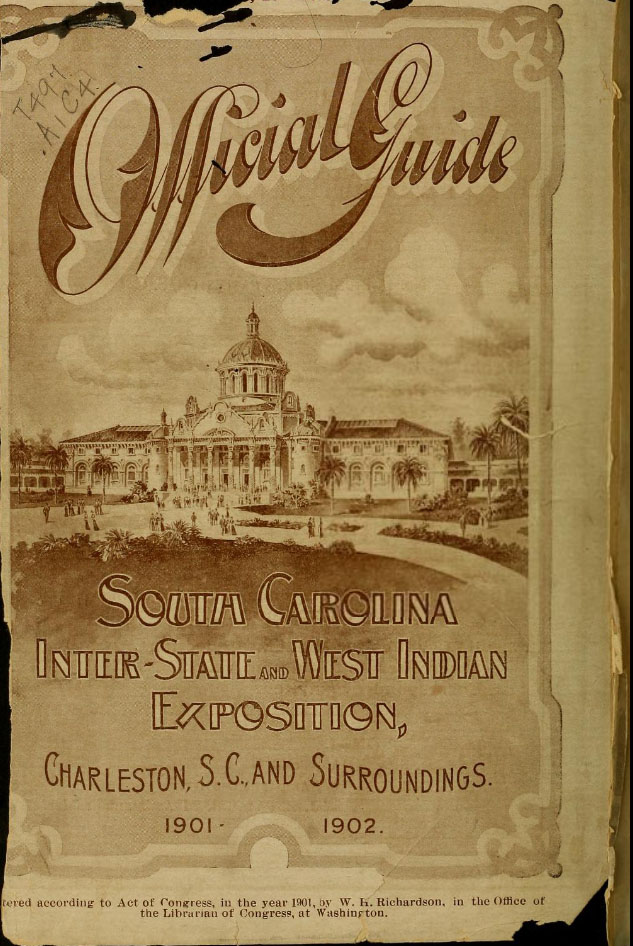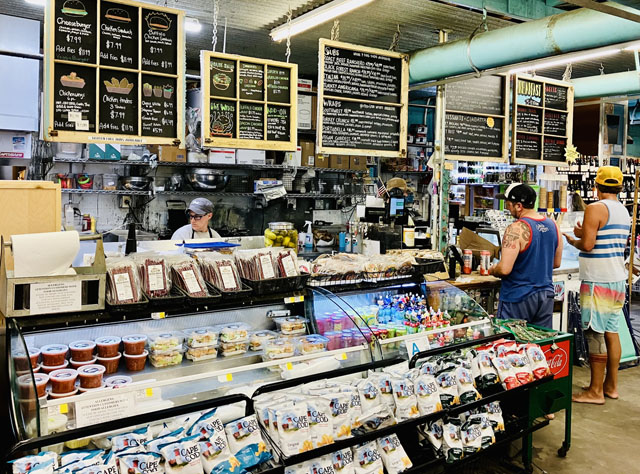South Carolina Inter-State and West Indian Exposition
03 Jul 2024
A world's fair in 1901 showcasing South Carolina industry seemed just the ticket to promote trade and commerce
By Tim Lowry
As the 19th century turned into the 20th, thanks to advances in transportation and communication, the world was becoming a smaller place. Americans were traveling further abroad on ships and trains powered by steam. Those who were unable to travel enjoyed reading about the great world in hundreds of periodicals and newspapers that sent reporters all over the globe to file stories from far-flung places.
There was a growing fascination with foreign cultures and exotic locales. Of course, advances in technology were also a great boon to business and industry. The idea of a true global economy was more of a reality than ever before. The fascination with faraway lands and the opportunity for big business often came together in extravagant events that came to be known as "World Fairs."
The 1893 World's Columbian Exposition in Chicago and the 1901 Pan-American Exposition at Buffalo, along with exhibitions in Atlanta and Omaha, NE inspired a group of Charleston businessmen to form the South Carolina Inter-State and West Indian Exposition held partly in what is present-day Hampton Park downtown.

Attracting a Worldwide Audience
At the time, the South Carolina coast still suffered the effects of the American Civil War, the Great Earthquake of 1886 and a depressed agricultural economy. A world's fair showcasing South Carolina industry seemed just the ticket to promote trade and commerce with the Caribbean and Latin America. Under the leadership of Frederick C. Wagener, a wealthy wholesale grocer, plans were made to attract national and worldwide attention with a collection of grand pavilions designed by architect Bradford L. Gilbert who favored the Spanish Renaissance style with buildings painted in creamy white.
A magazine was published far ahead of the December 1,1901 opening date. Each issue contained articles and illustrations updating the public on the progress of the construction of the great "Ivory City" rising on and around the banks of the Ashley River and previewing the attractions that would be displayed there. The fair promised to showcase machinery, transportation, agriculture and shipping, but there were also articles that tended toward the curious and exotic with titles such as "No Cannibalism in Jamaica," "The Silk Spider of South Carolina," and "A Charming Trysting Place." One local journalist wrote about a planned Hawaiian village with a model volcano.
The centerpiece of the fairgrounds would be The Cotton Palace, a 350-foot long building with a 75-foot dome to serve as a museum to "King Cotton." It would be flanked by a Palace of Commerce and a Palace of Agriculture. It is estimated that three million feet of lumber went into the construction of these great structures. The grounds also contained a zoo, an auditorium for 6,000 people, an Eskimo village, beautiful sunken gardens in the midst of an artificial lake, and a miniature railway to transport visitors from place to place throughout the 250-acre grounds.
Indeed, all of these promised attractions were put into place after much labor and considerable expense. The local newspaper reported on the opening day with a colorful article describing the midway as being populated with "scores of strange looking and peculiarly garbed men from every clime, Turks and Syrians, Armenians and Hindoos [sic], Arabs and Egyptians, each vieing [sic] with the other in brightness of colors and jabbering away in unknown tongues. Camels and dromedaries, elephants and zebras, in long procession, amid the musical discords of many contending bands, make pandemonium, while close at hand dancing Dervish are seen hobnobbing with Esquimaux [sic] from Labrador or Greenland, and a dusky Hawaiian maiden tries her unknown language on a recent importation from the Philippine Islands."
A group of Hawaiian musicians were a particular curiosity to local Charlestonians. In fact, as a result of the Exposition, a small group of island performers were invited to present songs and native music inside Charleston City Hall. A local news article tended to overplay the exotic factor by reporting that several of the city officials were caught making goo-goo eyes at four loosely-garbed hula dancers and that they consequently feared the wrath of their wives.
Obviously, cultural events have come a long way in Charleston since the turn of the 19th century. We now host the world-renowned Spoleto Festival annually and treat international performers and cultural presenters with the dignity and decorum that they deserve. However, as local historian Nic Butler writes in his "Charleston Time Machine" blog: "The brief tale of a Hawaiian band visiting Charleston in late 1901 and early 1902 represents a relatively small but important episode in the community's long history . . . They popularized the diminutive ukelele and the use of steel or glass slides on guitar strings to create evocative glissandos. Guitarists Black and White, performing Blues and Country music, adopted the slide techniques pioneered by the talented Hawaiians, and the distinctive sound of the "Hawaiian guitar" soon became a fixture of American culture."
Special events occurred throughout the exposition, including the displaying of the Liberty Bell in an exhibit hall sponsored by the City of Philadelphia and visits from well-known figures such as famed writer Mark Twain and President Theodore Roosevelt. On the largest attendance day, the fair hosted 25,000 visitors. However, the South Carolina Inter-State and West Indian Exposition closed on June 20, 1902. Attendance never reached the numbers projected by the organizers and the $1.25 million project only garnered $313,000 in receipts.
The grand buildings were torn down. The performers, the exotic animals and the museum displays all left town and the acreage was eventually divided into two large parcels. One parcel became the campus for the Citadel Military College and the other was redeveloped as Hampton Park. The only remnants of the great exposition are the duck pond which is a small portion of the sunken gardens and the bandstand located at the opposite end of the park's tree shaded greenway.
Though the international attraction is long gone, Hampton Park hosts events throughout the year showcasing art and culture from around the globe. In fact, you might even hear a musician or two in the bandstand playing tunes on a ukulele or a slide guitar!
Storyteller Tim Lowry is a Southern raconteur from Summerville. Learn more at www.storytellertimlowry.com.











